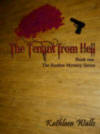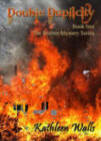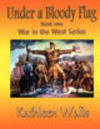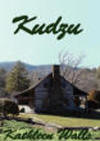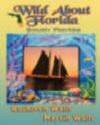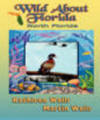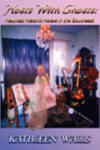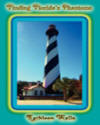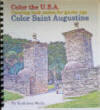The Gardens and Grounds at Monticello
Story by Tom Straka
Photographs by Pat Straka
About a year ago we spent the better part of a day at
Monticello, the home of Thomas Jefferson. The details are in an
earlier article in this digital magazine. While Monticello
is recognized as one of America’s most famous homes, the
grounds surrounding Monticello are almost as interesting as the
house. They were attractive enough to bring us back for a
second visit, centered on the restored vegetable and flower
gardens, orchards, Jefferson’s favorite trees, and a bunch of
fascinating outbuildings. They were well worth a second better
part of a day. Tours at Monticello have various options, mainly
the house tour and the
gardens and grounds tour. The highlight of our earlier
house tour was Thomas Jefferson interpreter Bill Barker, who
gives a presentation as Thomas Jefferson and answer questions
afterwards. That presentation is out-of-doors and can be part
of the grounds tour.
Vegetable Garden
Thomas Jefferson’s vegetable garden was an essential part of
his plantation, providing fruits and vegetables as farm produce
to feed the large plantation population. While the garden was
fundamentally a functional enterprise, he included ornamental
features in the garden scheme. Jefferson was also a scientist
who managed the garden as a
scientific experiment. He kept a Garden Book which served
as his “research notes.” Part of the book was a “Garden
Kalendar” where he noted the dates of garden events (like which
plants could handle an early frost or the productivity of
various row widths). Just like his mansion, the visitor notices
all kinds of special features that make the gardens more than
long rows of plants. He experimented with plants from around
the world and even species like beans and salsify collected by
the
Lewis and Clark Expedition.
Due to erosion, parts of the garden were terraced in the
early 1800s, making this a sort of
garden plateau, hacked from the side of a hill by slave
labor and underpinned by a mammoth stone wall standing over 12
feet high at its highest. At the middle of the garden is a
garden pavilion, overlooking an orchard, vineyard, and
berry squares. Jefferson used the pavilion as a peaceful
retreat for reading in the evening. The garden provides a
awesome view of the undulating Piedmont landscape. The two-acre
garden is divided into 24 “squares,” or growing plots.
Jefferson divided these by which part of the vegetable was
being harvested (fruits, like tomatoes and beans; roots, like
beets and carrots; or leaves, like lettuce and cabbage). The
garden has many examples of
19th century vegetables and cultivation techniques.
The
vegetable garden today has been restored to its appearance
in Jefferson’s time, including his horticultural experiments,
plateau landscaping, and site for his 19th century vegetable
varieties. It does get modern maintenance, but 19th century
cultivation techniques are displayed where possible. Many of
the perennials are in the exact location specified by
Jefferson. The produce from the garden ends up in the
Monticello Farm
Table café.
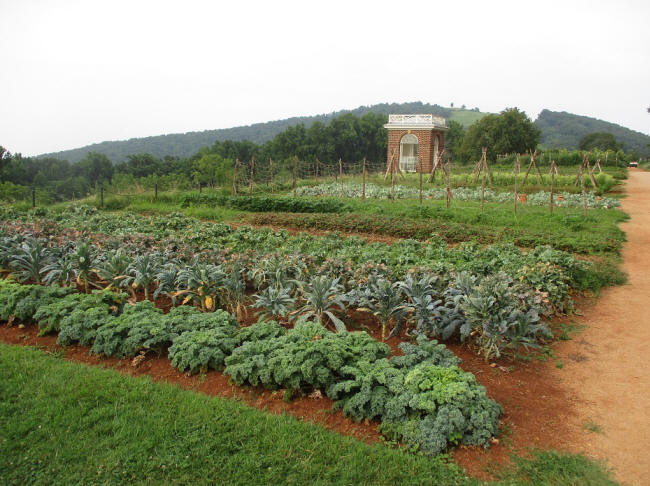
A
level view of the vegetable garden, with Jefferson’s garden
pavilion in the background. Two acres is a huge garden; the
pavilion is at the middle, so a whole other part of the garden
extends beyond it. The pavilion has double-sash windows,
Chinese railing, and a pyramidal roof.

The view of the vegetable garden from above the
terrace provides a better perspective of the garden squares,
its massive size, and the huge diversity and variety of plants
that make it an edible laboratory. A sign at the garden notes,
“Jefferson’s garden was unusual, however, for its large size,
ambitious planting schemes, and strategic location that
promoted longer growing seasons.”
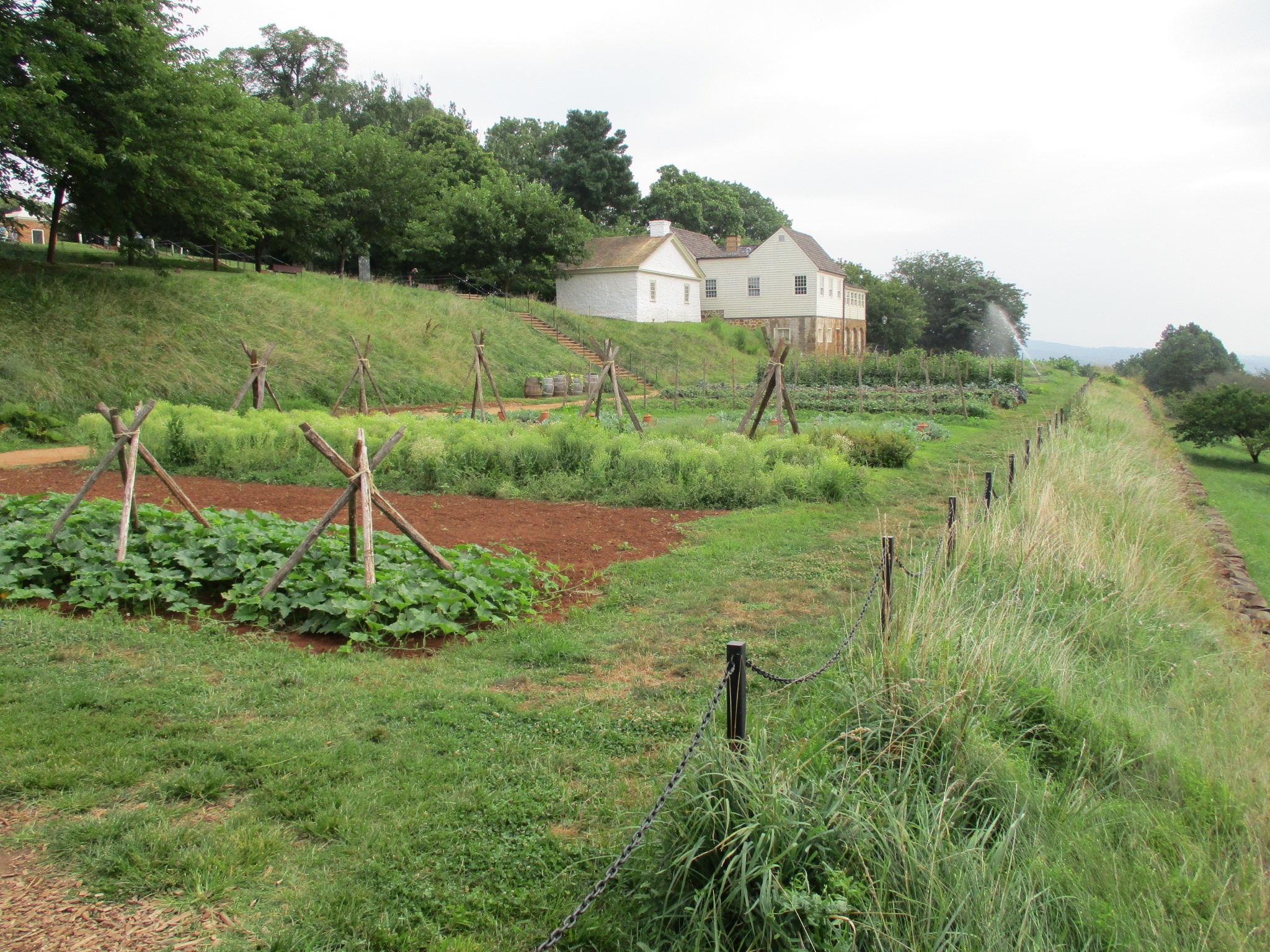
The plateau terrace and some
outbuildings also give a perspective of how the vegetable
garden is laid out. The garden is very long, with numerous
diversions at the top of the terrace to explore.

There
are all kinds of unusual plants to discover in the vegetable
garden. This is the
Hyacinth Bean arbor. The species is native to tropical
Africa. It was first planted at Monticello in 1804.
Mulberry Row
Just above the vegetable garden is Mulberry Row, the dynamic
manufacturing area of Jefferson’s 5,000 acre agricultural
operation. It is a long plantation street that served as the
center of work for dozens of craftsmen. It had more than 20
dwellings, workshops and storehouses. Today, it is mostly
foundations with signs explaining the crafts involved:
textile workshop,
joining and woodworking,
nailmaking,
tinsmithing, and
blacksmithing. There was also a
sawmill operation,
gristmill, canal operations, and a
charcoal burning operation to make fuel. The
charcoal sheds were on the west end of Mulberry Row. There
are many signs along the row describing the archaeological work
involved in locating building foundations and the artifacts
unearthed.

Mulberry
Row is a long plantation street above and parallel to the
vegetable garden (seen downhill in the photograph). It is
mostly foundations, but a few restored buildings are under the
mulberry trees.
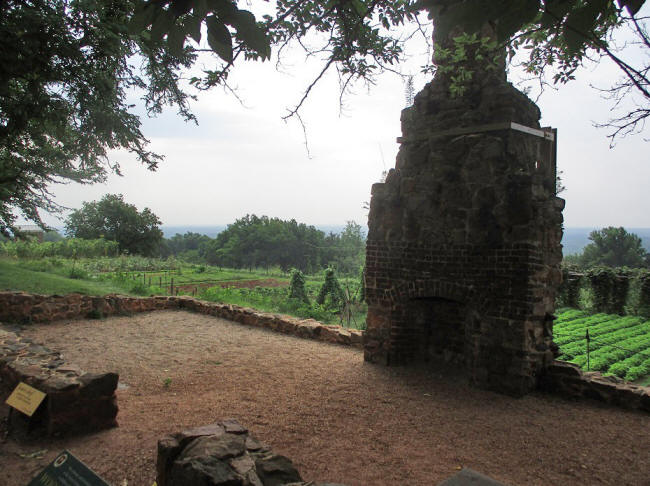
The
Jointer’s Shop on Mulberry Row is typical of the
foundations along the street. The chimney and foundation are
all that remains. A joiner was a woodworker who made doors,
windows, and decorative finish work. Jefferson employed
highly-skilled joiners.
 A
few restored buildings are on Mulberry Row, like the
forge and
quarters.
A
few restored buildings are on Mulberry Row, like the
forge and
quarters.
Isaac Granger Jefferson worked the forge in the original
building on this site, which housed a
"storehouse for iron" in 1796, a short-lived tinsmithing
operation, a small nail-making shop,
and also served as quarters for enslaved people.
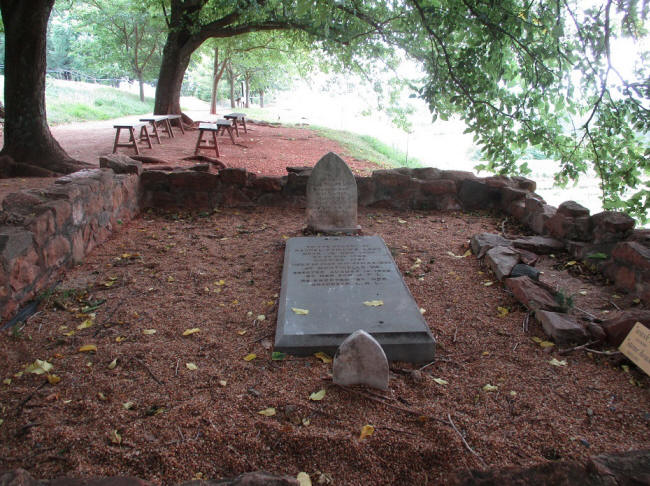
Mulberry Row even has a
gravesite from a former owner following Jefferson’s death.
Monticello's Slavery History
The grounds include lots of interesting buildings.
Slavery is not hidden at Monticello and slave
housing is part of the outbuildings and is part of a special
tour. Most of the outbuildings supported the agricultural
enterprise, like the
stables. A plantation would need
ice in the summer and interesting structures like the
ice house can be found by wandering the
grounds.

One of four cabins that stood at
this spot that provided slave housing. During the colonial era
enslaved laborers lived together in large multi-family
dwellings; by the 1790s, many slaves, who pressed for
housing for their families, lived in single-family quarters.
Plantation Buildings

Eagle, Peacemaker,
Tecumseh, Bremo, Wellington, and Diomede were the six carriage
and saddle horses, plus one mule, who were stabled here in
1821.
The plantation had as many as 30 riding and carriage horses,
workhorses, and mules.

In the winter ice would be
harvested from the nearby Rivanna River and transported to the
icehouse
for storage. It took 62 wagon loads of ice to fill it. The cylinder
extends 16 feet underground
and six feet aboveground.
Flower Gardens
The
flower garden was next on our tour, but
was harder to find than the vegetable garden. While the
vegetable garden was highly organized and two-acres in size,
the flower garden is not in one place. It turned out to be
hiding in plain sight, along the roads and paths. It is a very
nontraditional flower garden, not a room outside, but an
exposed retreat. There are flowers bordering the West Lawn, for
example, and when you approach the mansion, the portico of
Monticello catches your eye and you tend to overlook the
flowers, looking at Monticello in awe. Once you look closer,
you realize the border of the West Lawn is a winding flower
garden.
The
West Lawn features the “Nickel View of
Monticello,” making it an icon of American landscapes. The
winding walk delineates the border of the West Lawn and that
border is one of the main flower gardens. Between the West Lawn
and the house are
more flower beds and one side of the
lawn has a
fish pond. Jefferson planned and
sketched the
winding flower border. He actually laid
the beds out in ten-foot sections, each compartment labeled and
planted with a different flower. The flower gardens are planted
as many as three times a year, early-, mid-, and late-summer.
There are also
fruit gardens: two orchards, two
small neighboring vineyards, and berry “squares.”

Along the winding flower beds,
with Monticello across the West Lawn. It is easy to see how the
building is a distraction from the flower beds, at least when
you first enter the West Lawn.
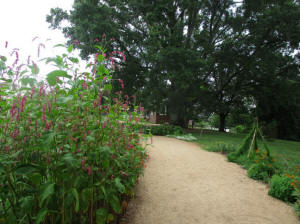
The winding border of the West
Lawn is a massive flower garden.
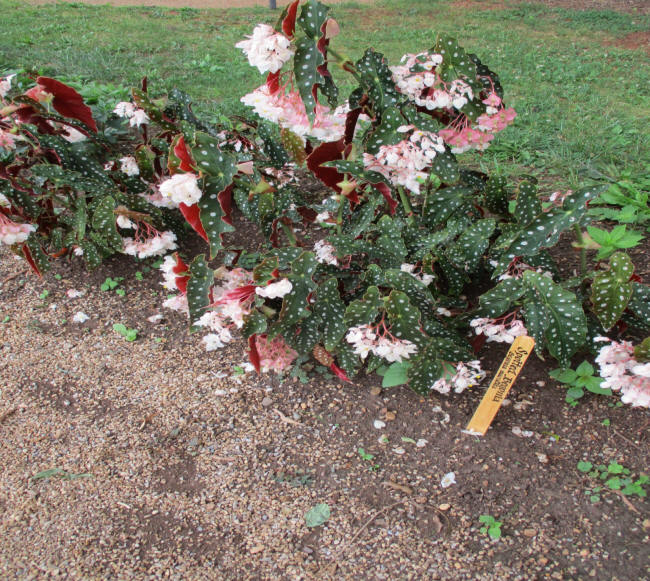
One example of flowers along the
winding border. Notice the hand-written label on the wooden
stake used to identify the plant. Some have “TJ” along with a
year written on top. That denotes a plant grown at Monticello
during Thomas Jefferson’s lifetime.

Not all the flowers are on
the winding border. These are at the front of Monticello.

Snow on the Mountain. A flower
on the winding path with a history.
You have to look at the hand-written label to figure out the
history.

Label for Snow on the Mountain. The code on
top of the wooden stake denotes this plant came from the Lewis
and Clark Expedition, with the year. The flower garden has lots
of interesting history hidden in it.
Trees
Trees were ranked at the top of
Jefferson’s hierarchical chart of favorite plants of
Monticello. Any tour of the grounds given by Jefferson would
include the highlight of his “pet trees.” He had 160 tree
species on the plantation. Native and exotic trees were planted
in groves. Ornamental trees grew near the house in “clumps.”
There were “allées” of mulberry and honey locust within his
road network and plantations of sugar maple and pecan. There
was even a living peach tree fence. Eighteen acres on the
northwestern side of the plantation were designated as the “grove,”
intended to be an ornamental forests with the underbrush
removed and the trees turned and thinned.

A
southern catalpa along the winding border, one of the
oldest trees at Monticello.
It was a favorite of Thomas
Jefferson.

Thomas Jefferson Grove today; as Jefferson
intended, it is almost parklike,
with a wide variety of unusual
ornamental trees.
Jefferson Family Cemetery
The Jefferson family cemetery is on the grounds,
downhill from the mansion. It is a stately cemetery.
Jefferson’s gravesite is visible from
outside the fenced exterior. Jefferson left explicit directions
on the shape of the obelisk that would mark his grave and the
inscription that was to be on the grave marker (and not a word
more). You usually have expectations of how something will
look; in the case of Thomas Jefferson’s gravesite the
expectation is ornate. In this case the expectation was met.

The obelisk which marks Thomas Jefferson’s
grave.

Thomas Jefferson’s gravestone obelisk
inscription, what he considered his greatest accomplishments.
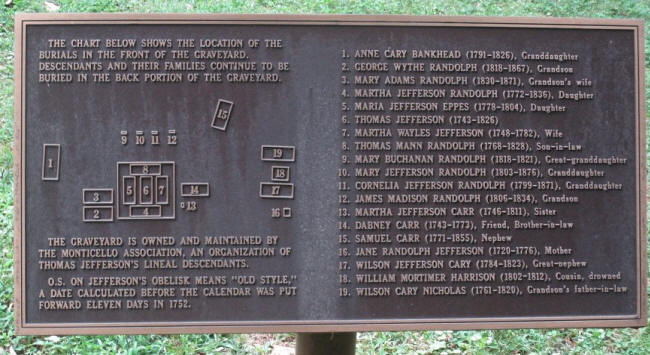
The list of individuals that share this
cemetery with Thomas Jefferson is quite interesting.
Author/Photographer. Tom Straka is an emeritus
professor of forestry at Clemson University. He has an interest
in history, forestry and natural resources, natural history,
and the American West.
Pat Straka is a consulting forester and the photographer on
most of their travel articles. They reside in South Carolina,
but have also lived in Mississippi and Virginia.

















